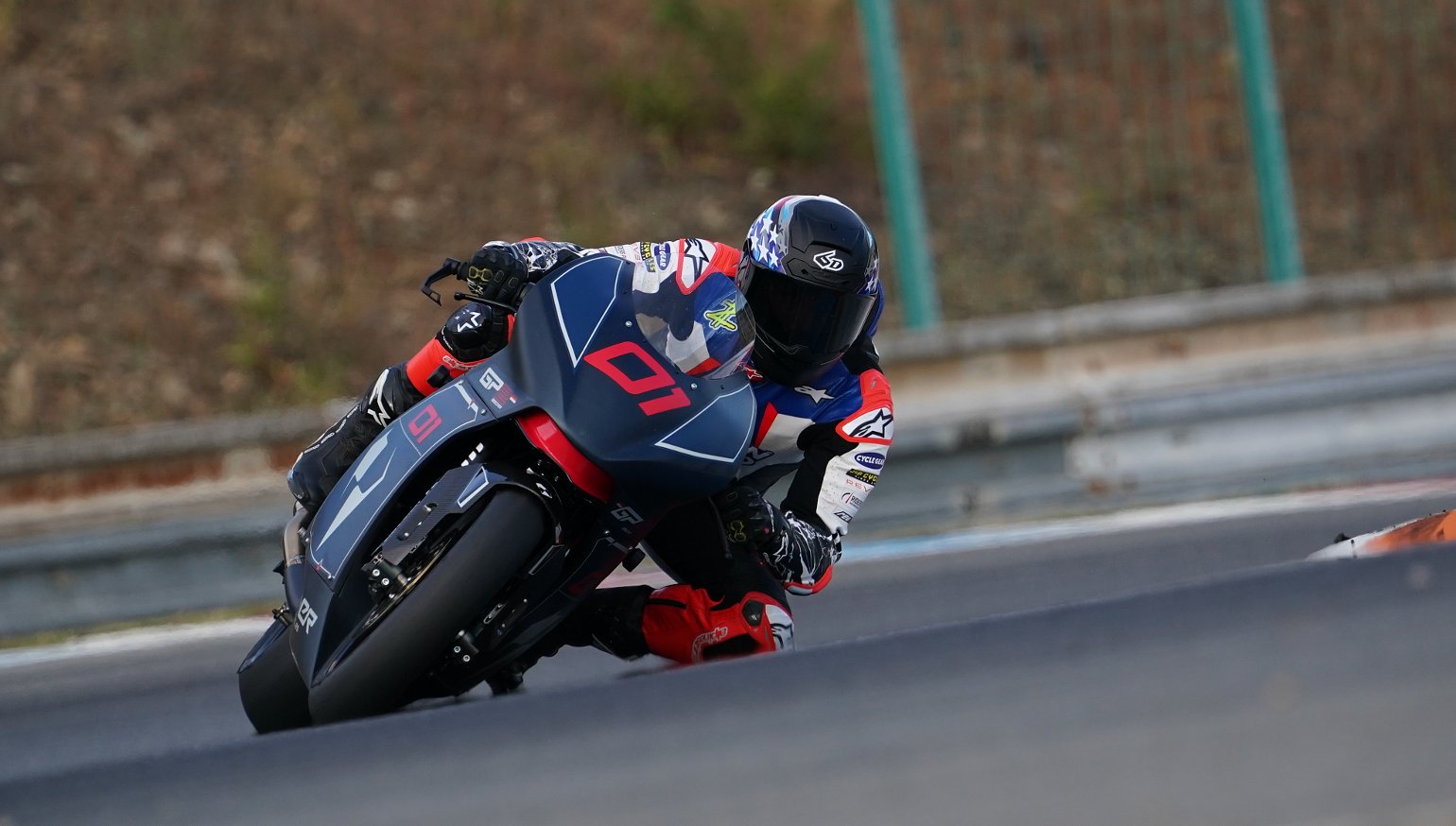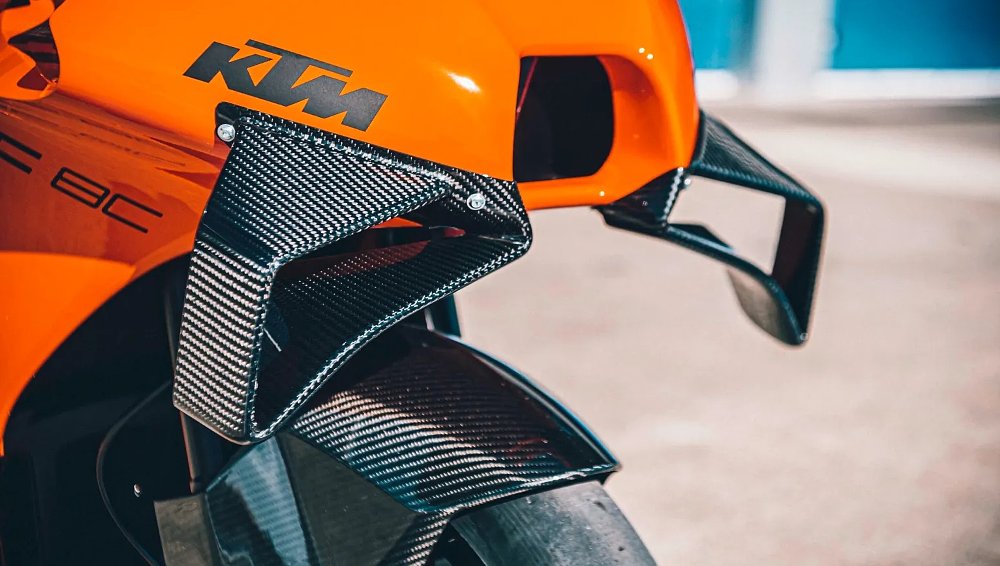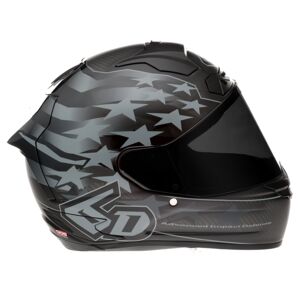The first turn at the Brno Circuit in the Czech Republic is faster than it looks. If all goes well, it's one of those corners that gives you a little bit of panic every time you lean in and ease off the brakes. “I’m not going to make it,” you think.
If you freeze in this moment, on the frayed end of your own riding ability, and imagine the perfect motorcycle for going around a track, what do you see? Everyone’s machine will look a little different. Experts will want power, beginners will want approachability, and everyone will want sweet handling.
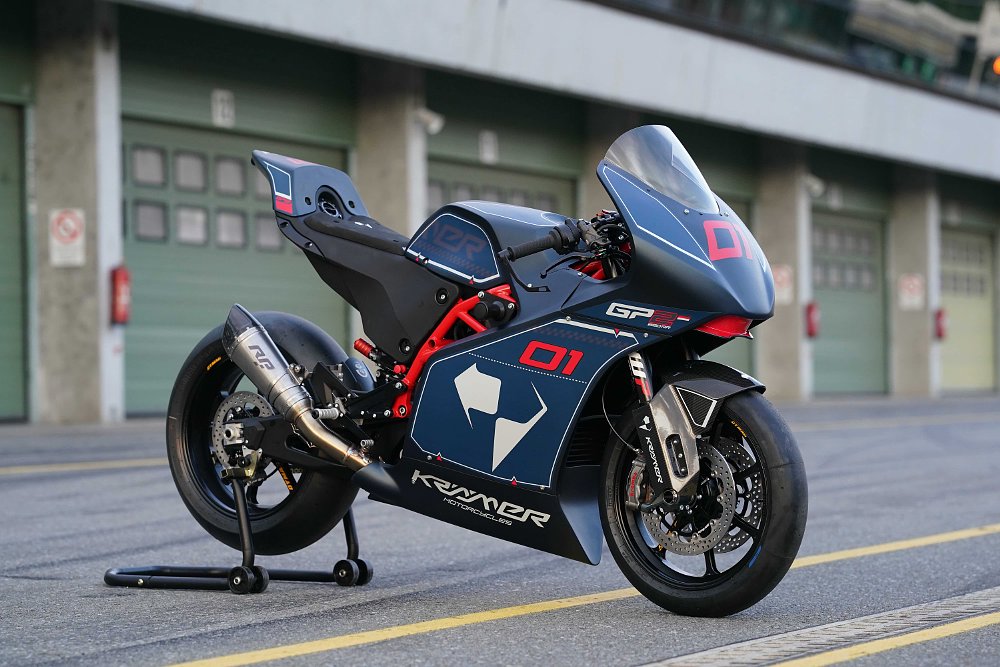
Just for starters, think over this set of specs — 313 pounds, 138 horsepower, fully adjustable suspension, Superbike-spec brakes, and on-board data logging and displays to tell you how many tenths of a second faster or slower you’re going as you ride. And the cherry on top, a raspy, twin-cylinder soundtrack echoing in your wake. How much would you pay to have all of that, plus the confidence to peel into Turn 1 at Brno knowing you’ll nail the apex?
Evolution of the GP2-890RR
Krämer Motorcycles was founded in 2013, a handful of years after a bright KTM engineer of the same name decided to build a “supermono” race bike with a 690 cc engine from Mattighofen tucked into his own chassis. For the first six years, the company essentially consisted of three people, working to improve what became the HKR-EVO2, one of which I raced in 2020. In 2018 the team developed the first GP2 prototype, using a KTM 790 engine.
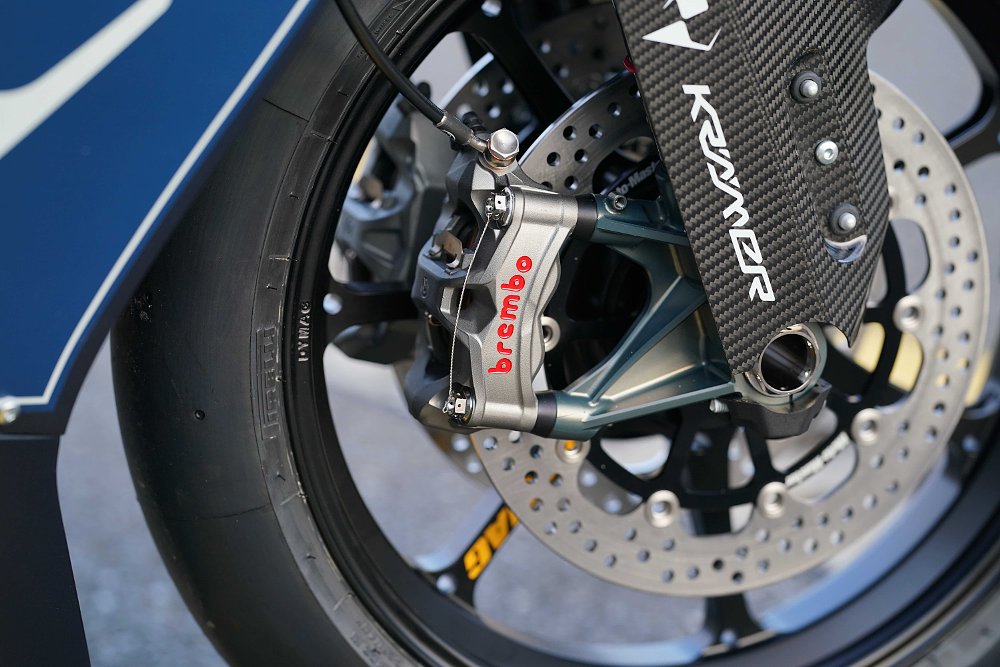
The GP2 890 has a lot of the same Krämer DNA — a steel-trellis frame, high-spec brakes and suspension, a rotomolded tail section that doubles as the gas tank, and slender bodywork wrapped neatly around the lot. A “standard” R model went on sale in 2020 and now this RR version shows off the culmination of what Krämer Motorcycles has learned over the past 10 years.
For starters, a lot of effort went into squeezing more power out of the 889 cc KTM parallel twin. To name a few: titanium connecting rods and valves, high-compression pistons from Pankl, more aggressive cams, a CNC’d cylinder head, a new exhaust by Czech company RP Tuning, plus larger throttle bodies and a stronger fuel pump. The result is a version of the 890 engine that revs to 11,500 rpm (1,000 rpm higher than the standard mill) and makes 138 claimed horsepower, more than the Krämer-built KTM RC 8C and the standard, “single-R” version.
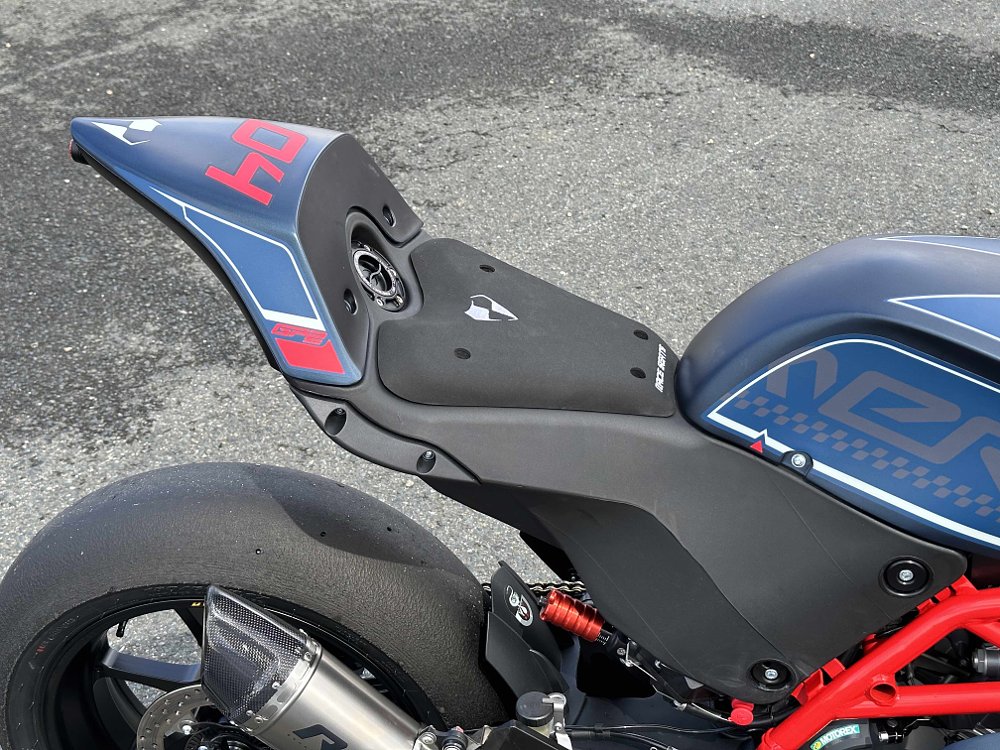
As trick as the engine is, the chassis is arguably the crown jewel, as is tradition with Krämer. Being friendly with KTM means the RR’s suspension consists of fully adjustable WP components, front and rear, plus Brembo Stylema calipers squeezing floating discs via an adjustable, radial-pull master cylinder and braided-steel brake lines. Wheels are Dymag forged aluminum. The triple clamp glistens with CNC patterning, and is prominently etched with both the steering-head offset and a set of hash marks that align with the clip-ons, so that the handlebar angle can be changed quickly and efficiently.
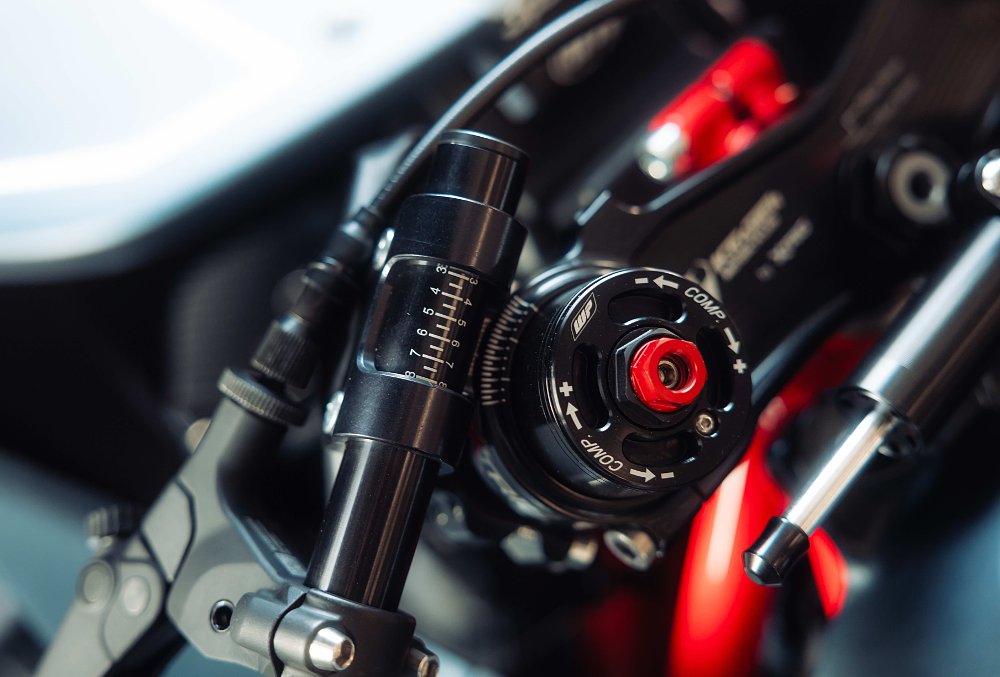
In general, the 890RR puts off a high-quality vibe, but it’s not pure luxury. The swoopy bodywork is basic and decorated with vinyl stickers, not glossy paint (though gloss black is set to be available). Frame sliders are glaring and sturdy, and the neat, hollow tail section has replaceable pucks built into the edges that are most likely to touch down in a crash. All of this adds a whiff of utilitarianism that’s almost threatening — pretty as it is, this motorcycle isn’t meant to be eye candy, it’s a tool for going fast.
That continues with the display, which on the spec sheet looks like another full-color TFT unit meant to dazzle the rider. Instead, the GP2’s AIM MXS 1.3 dash is hooked to a GPS unit that logs data and can show lap information in real time. Working in the background is a six-axis inertial measurement unit integrated into the 890RR’s MecTronik ECU, which commands the wheelie control, multi-level traction control, and pit-lane speed limiter, among other tasks.
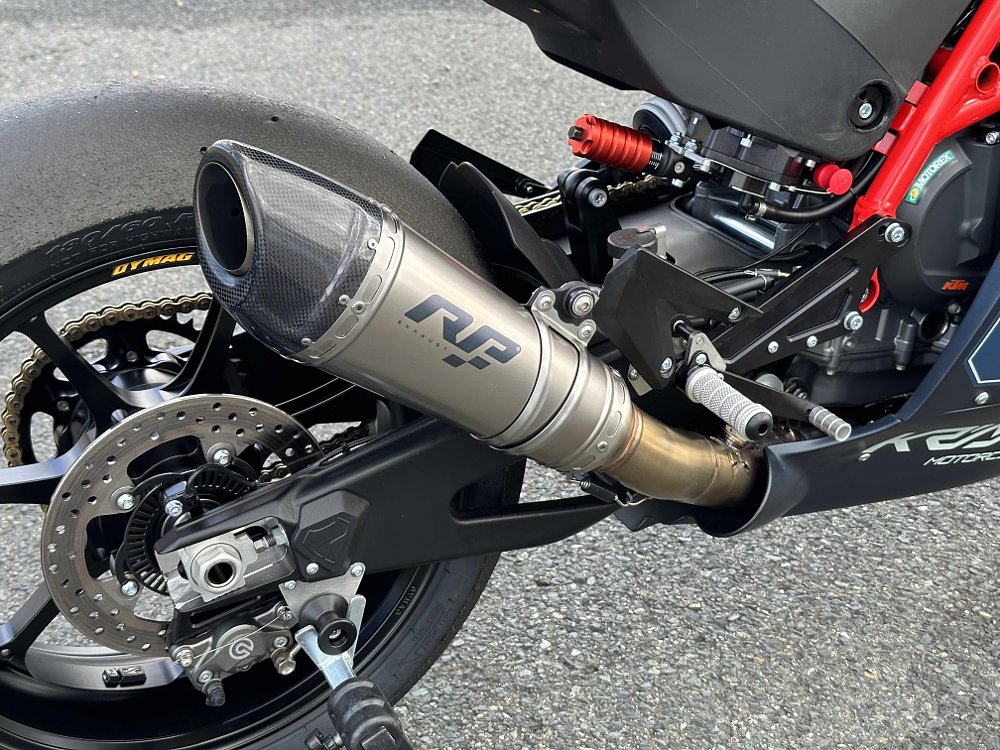
There are dozens of display options on the dash, most of which offer a crisp layout with an emphasis on technical data meant to help the rider through a lap. It’s high-contrast and clear, and not meant to be beautiful. The race-bike switchgear on the left handlebar, which controls most of the bike’s options, isn’t labeled. Learn it or don’t use it.
The 890RR at speed
The riding position is a statement in itself. The seat is thin and grippy foam rubber, more of a temporary perch when the rider isn’t hanging off in a corner, and it’s a substantial reach to the wide-set hand grips that jut out from the spartan cockpit. It’s not uncomfortable, but it is uncompromising.
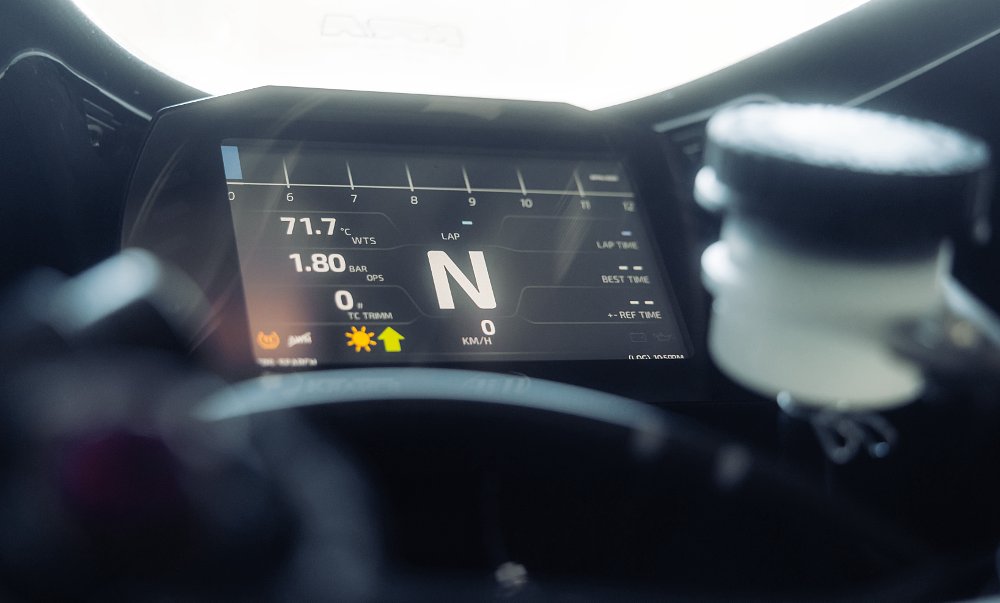
As is the exhaust note when the engine jumps to life. It’s a parallel twin with a 75-degree crank-pin offset, which means it mimics the velvety rumble of KTM’s 75-degree V-twins. This powerplant has been tweaked pretty heavily, breathing through a high-flow exhaust and purposeful muffler, which means even at idle there’s a menacing crackle coming out the pipe. It’s quick to rev and makes noises that are a little bit unholy.
As I trundled toward the track entrance, the engine bouncing excitedly off the pit-lane limiter, I asked myself what the 890RR would feel like as a street bike. Hilarious, almost awkward. The fiberglass crotch at the front of the seat is unpadded and everything about the stance is for attacking, not relaxing. Maybe “uncomfortable” is the right word, come to think of it.
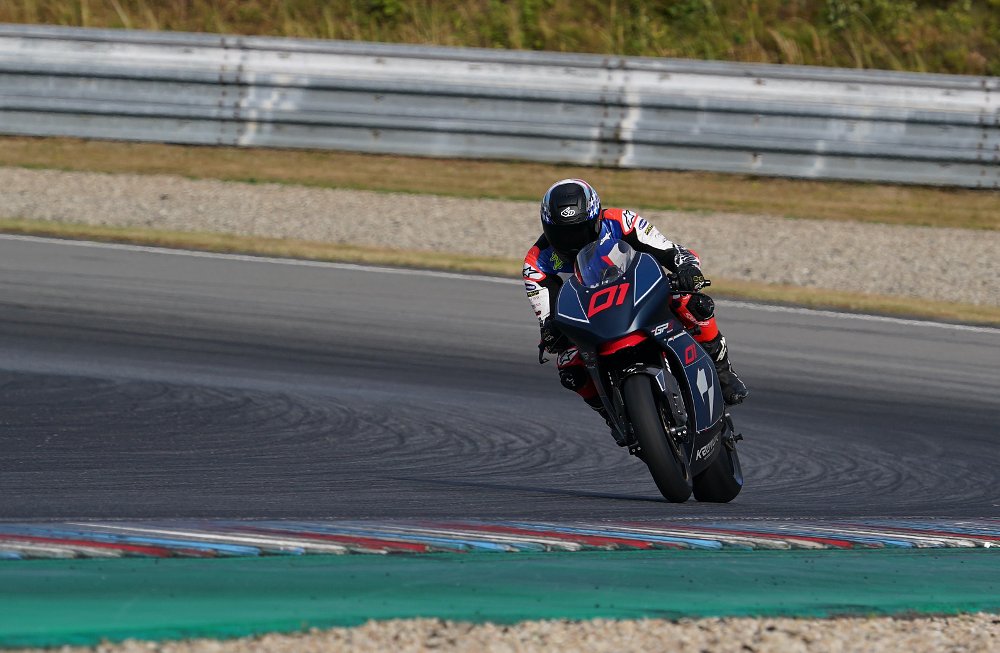
As with any good track bike, those would-be discomforts melt away as soon as the bike picks up speed. I worked up to accelerating and braking harder into and out of Brno’s wide, flowing layout — even with the traction control turned all the way up the bike clawed its way maniacally out of corners. I flicked the bike from side to side more aggressively, and soon everything was, in fact, comfortable. Near perfect. The overall power is not overwhelming. It’s actually much less hectic than the typical 200-horsepower rockets that pack the paddock at most track days, but it feels quick for a couple of reasons.
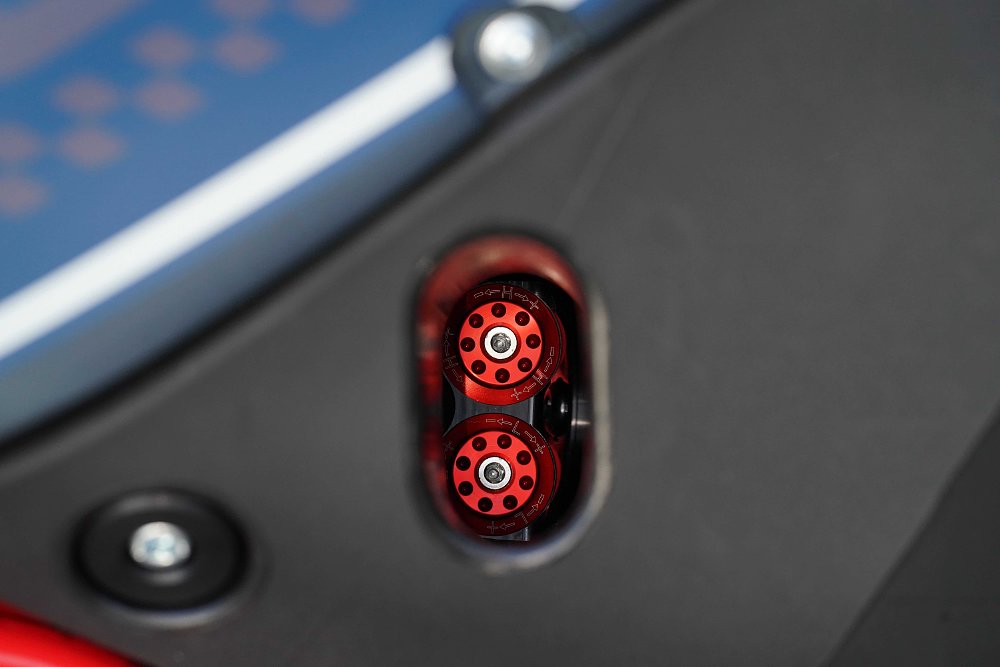
One, it’s light. It weighs around 150 pounds less than a showroom 1,000 cc sport bike and about 50 pounds less than a good, track-prepped 600 cc Supersport. Then there’s the torque. Any inline-four cylinder machine with approximately 140 horsepower will need lots of rpm to make power, but the Krämer’s KTM engine is strong and linear just about everywhere in the rev range.
Last of all, there’s a 55-degree, quick-turn throttle — in other words, as smooth as the power is, it takes some adjusting to adapt to how quickly the bike responds. The same goes for the brakes, which aren’t grabby or ornery at all, just hugely powerful. Steering, too, is agile without being groundbreaking, but the grip on offer is phenomenal, thanks in part to the minimal weight. When all of this is bundled together, the ceiling of performance is absurdly high.
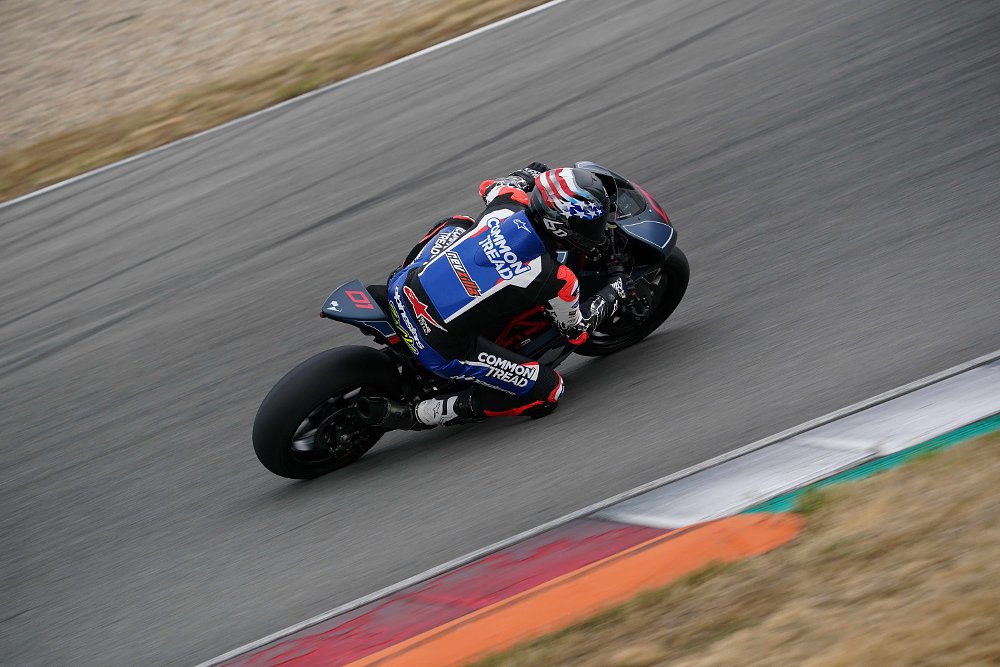
That’s the GP2-890RR in a nutshell: so efficient and incredibly focused at doing one thing, going around a track, that wrapping your head around the overall potential takes some time. Wouldn’t you know it, the bike can help with that, too, since all of the data for each lap is logged and accessible via laptop software.
One of Krämer’s engineers, Felix, flipped open his computer and talked me through what he was seeing. The bike’s previous rider was two seconds a lap faster than my best time, and he overlaid the tracked data. “Your roll speed in the middle of the corner is actually faster than his,” said Felix, “but look here, this braking zone alone, you lose more than half a second. In… 163 meters.”
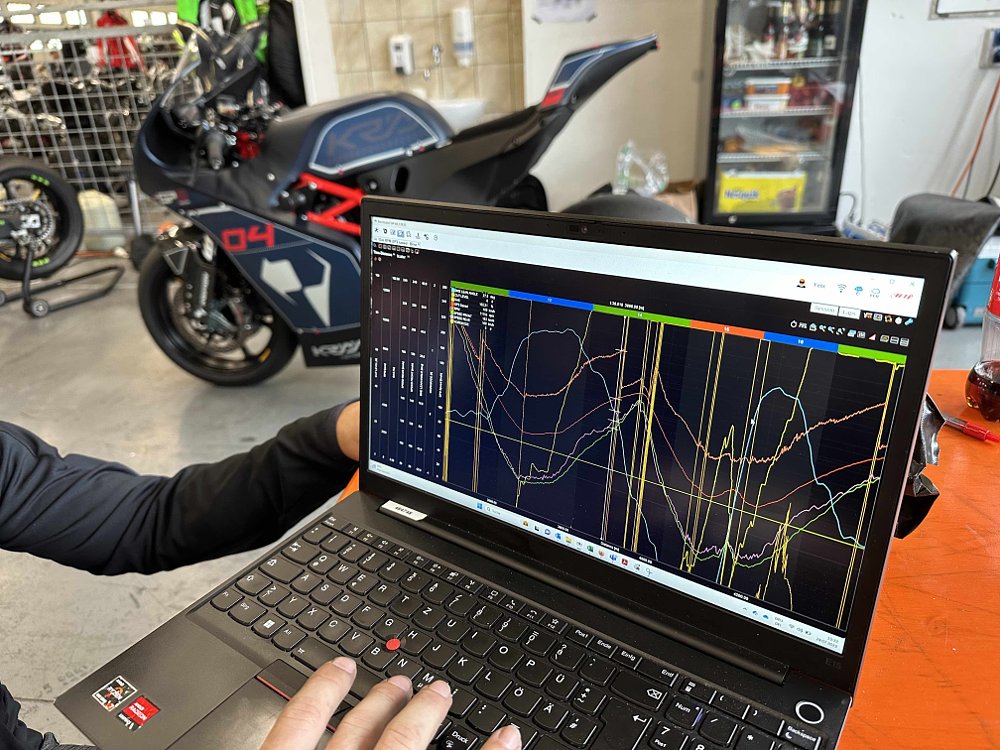
Braking harder was not something I thought I could do. Then again, Felix seemed like a smart guy and numbers don’t usually lie. The next session I focused on braking later into two particular lefts, Turns 3 and 8, as well as squaring off corners a little more and spending less time on the edge of the tire. At the end of the session my lap time had improved by 1.3 seconds. Felix beamed.
Reflecting on the 890RR
For me, the closest thing to racetrack perfection I’ve ever experienced was Honda’s RC213V-S in race trim — precision and power captured together in the same bottle, for $200,000. Ari tells me the Ducati Superleggera V4 was similarly impressive. The Krämer GP2-890RR might be the next best thing, which could be one of the reasons it costs $40,000.
If it weren’t for my helmet, the braking force might have peeled my nose off the front of my face, and I cannot remember the last time I felt a motorcycle carve corners with such ridiculous grip. It is fantastically compliant and insanely capable, probably in part because it isn’t particularly intimidating or “fast” in the classic sense.
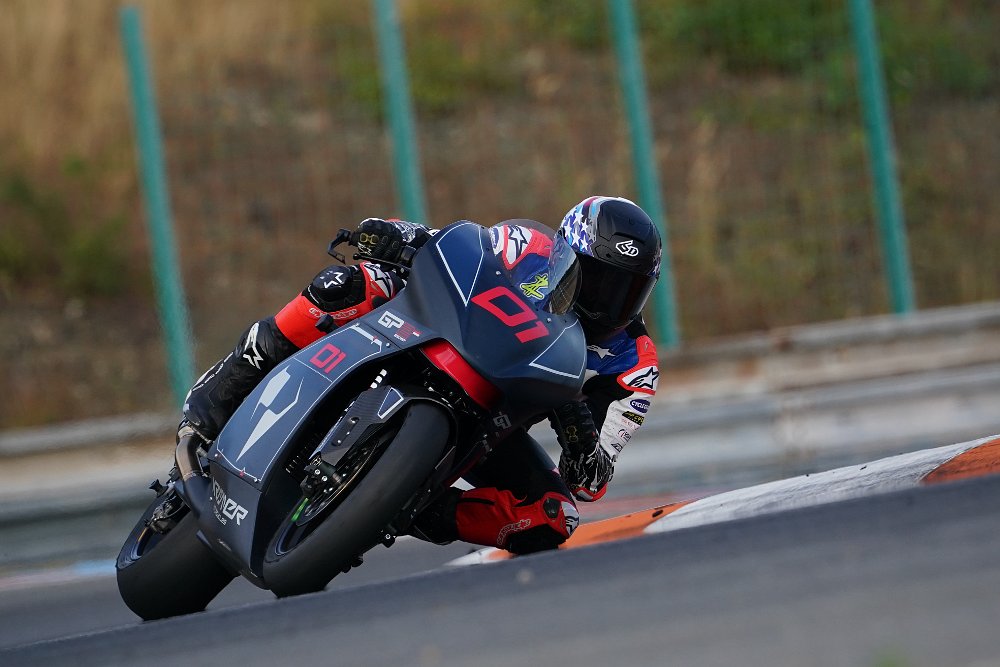
Setting aside the amazing potential of the machine on a race track, the Krämer GP2-890RR is interesting for a few reasons. Building a KTM sport bike is a fun thing to do, considering KTM itself doesn’t seem to have much of an interest. More than that, Krämer’s efforts with the GP2 have been rewarded with KTM commissioning and selling the RC 8C. It’s cool, simply for the general motorcycling public, to see a KTM sport bike with a fairing exist at all. One that’s for sale, anyway.
The cerebral nature of the 890RR’s data collection is a neat piece of flair, too. It’s not new — a Yamaha R1M in 2017 had data logging that could be viewed in an app — but it is a cornerstone for a community of people who care about going around race tracks quickly. The Krämer team envisions a day when a person at any ol’ track will be able to access data of a fast lap and then learn from it, as I did, as well as add to the cache of information themselves.

Let’s also appreciate that Krämer is a small company doing big things. It is a David in a land of motorcycle Goliaths, except there’s no feud. One of the Goliaths, in this case KTM, is happily working with David because there are some things a giant just can’t do as well as the couple dozen dedicated and determined Krämer staff. It’s a scrappy cohort with interesting ideas and the industrial agility to make the dreams real without rolls of red tape getting in the way.
Last of all, it is important to applaud machines that answer some sort of ‘what if’ in motorcycling. Combining a dirt bike and a street bike sounded like a fool’s errand at first, and so did the idea of a Honda Cub with knobby tires, or a 1,300 cc sport bike. Silly, all of it. And yet here we are basking in the phenomenal successes of the BMW GS, Honda Trail series, and Suzuki Hayabusa.
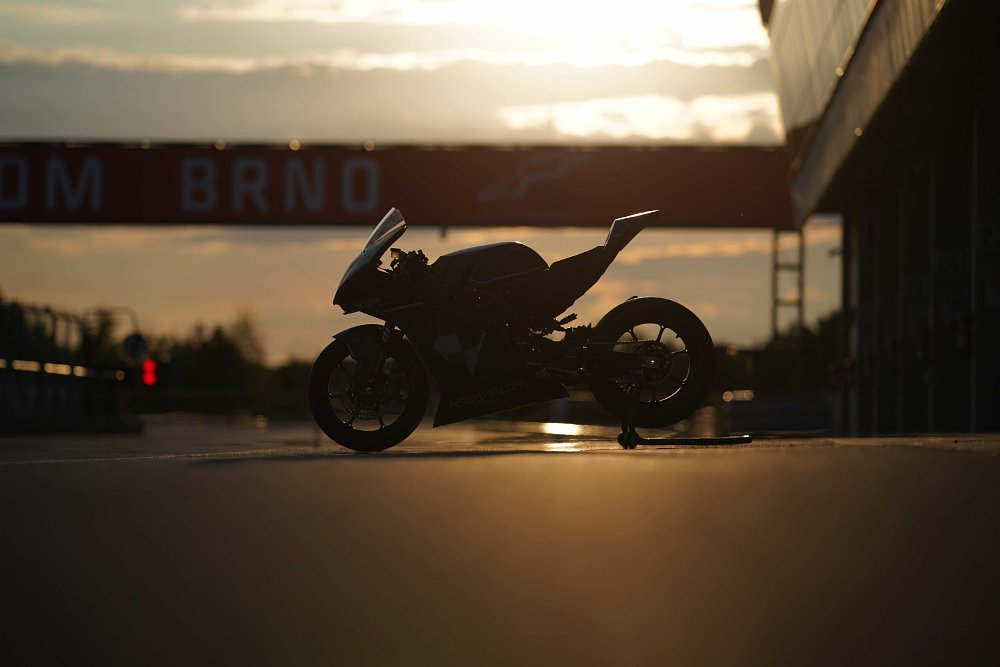
I’m not saying the GP2-890RR is the next legend of the two-wheel world, but it’s worth appreciating bikes that scratch at the edge of what’s reasonable. For some riders, this motorcycle could be not enough or too much. They might want more power, or for the whole experience to be less severe. Every one of us will wish it was less expensive.
Some of us might rather miss that apex in Turn 1 at Brno. Just know, the next time you enter a turn and think you’re going too fast, there are only a few bikes in the world that could help you more than this one.
| 2024 Krämer GP2-890RR | |
|---|---|
| Price (MSRP) | $39,995 |
| Engine | 889 cc, liquid-cooled, eight-valve, parallel twin |
|
Transmission, final drive |
Six-speed, chain |
| Claimed horsepower | 138 @ 10,100 rpm |
| Claimed torque | 73.7 foot-pounds @ 8,200 rpm |
| Frame | Steel-tube trellis |
| Front suspension | WP Apex Pro 7543 fork, adjustable for spring preload, compression and rebound damping; 4.7 inches of travel |
| Rear suspension | WP Apex Pro 7746 shock, adjustable for spring preload, ride height, compression and rebound damping; 5.5 inches of travel |
| Front brake | Brembo Stylema four-piston calipers, 290 mm discs |
| Rear brake | Brembo two-piston caliper, 230 mm disc |
| Rake, trail | 23.3 degrees, 4.1 inches |
| Wheelbase | 55.1 inches (adj. +/- 0.6 inches) |
| Seat height | 32.6 inches (adj.) |
| Fuel capacity | 4.2 gallons |
| Tires | Pirelli Diablo Superbike slick, 120/70-R17 front, 180/65-R17 rear |
| Claimed weight | 313 pounds (no fuel) |
| Available | Now |
| Warranty | None |
| More info | kramermotorcyclesusa.com |




